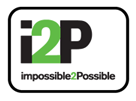Classroom Activities For Teachers by Teachers
Understanding Financial Literacy
Objective: To understand the term financial literacy.
BACKGROUND: Financial Planning is much like taking a trip. You plan where you ultimately want to be and the stops along the way. You plan and you prepare and you get ready for any bumps in the road. The ability to make informed financial decisions is essential to our well-being at every stage in our life. These decisions range from daily spending and budgeting to choices involving borrowing money, buying insurance, saving for retirement, owning home or continuing education.
1. Write the term financial literacy on the board. Underneath, write a K/W/L chart.
| K | W | L |
|---|---|---|
| What I know | What I want to know | What I learned |
Ask students to take out a sheet of paper and draw the chart at the top.
2. Ask students to brainstorm the K column (What I know) writing any term, topics, or phrases that they already know and understand about financial literacy. Give them 5 minutes to complete.
3. After the students have finished, ask them to call out items from their list. Jot down all items on the board. When topics have been exhausted, tell students to look at the master list and see if it now contains any items they may not know but would like to learn about. Ask them to write these in the W column (What I want to know) of their table.
4. Then tell them to put their names on their paper and turn it in. Explain that they will see the sheets again later on so that they can determine if they've achieved their goal.
5. Save sheets and distribute later.
Why is Financial Literacy Important?
Objective: To be able to relate to why financial literacy is important and understand that it is something that every generation encounters.
1. Define financial literacy and facilitate a discussion of why it is important. To aid this discussion have each student prior to the class interview their parents, grand-parents, uncles, aunts, people from different generations about "Why is financial literacy important"" In groups of three have each person share their findings and have the group make one note that was similar between all of their findings and one note that might have been different regarding why financial literacy is important. Have students write these similarities and differences on two different colored sticky notes (yellow for similarities and green for differences) and have all students post them on a large paper posted on two different walls (one wall for green sticky notes and the other for yellow sticky notes.) Have students take 5 minutes to go up and read the walls and familiarize themselves with what others have discussed.
2. Explain to students that there is an imaginary line on the ground from one end of the classroom to the other. Ask them to come up and stand on the line depending on how important they feel financial literacy is. Standing all the way to the right on the line indicates that they believe it is extremely important, standing all the way to the left indicates that they do not believe it is important at all, standing somewhere in the middle indicates they believe it is important to some degree. This will give the teacher an understanding of what his/her students might be thinking and what needs to be discussed further.
Lesson Extension: Have students listen to the following CBC Radio One (Ontario Today) episode about "Money Savvy Kids" which aired August 15, 2013. It is 51.38 minutes long.
http://www.cbc.ca/player/Radio/Local+Shows/Ontario/Ontario+Today/ID/2401282983/
Have students discuss the following questions:
- What does literacy mean? What are some examples of literacy in our classroom (math, English)? Based on that definition, how would that relate to finance/money?
- Why do you think that some people might not think financial literacy is important?
- After what you have heard and found out, do you think financial literacy is important? Why? Why not?
- What have you learned from your family/parents about financial literacy? ie: Did you ever have an allowance? How did you learn to save money? How easy is it for you to spend? Did you learn to share? Did you learn about investments, interest, saving accounts, budgeting? Did you ever owe money? If so, how did you pay it back? What is the value of work in your family? How do you contribute to your family if your parents pay the bills? Do you think you should contribute in some form or another?
- How do you think that being financial literate helps you be able to contribute to your community?
Creating S.M.A.R.T. Goals
Objective: To understand the importance of setting S.M.A.R.T goals in any plan.
1. Explain to the class that the basics of financial literacy revolves around planning and preparing much like you would plan and prepare for a trip, to buy a car or even a date! You need to determine what your short-term, intermediate-term and long-term goals are. One way of doing this is by setting up S.M.A.R.T. (Specific, Measurable, Attainable, Realistic, Time bound) goals for yourself.
2. Write the following scenarios on the board:
- I want to hike in Peru this summer
- I can use my expected Christmas bonus to buy an iPhone
- I'll get a job to pay for my cell phone bills
- I'll save all the money I make this summer. That should pay for my tuition.
Ask the class to analyze each statement and determine what component of a S.M.A.R.T Goal is missing. Ask them to rewrite each scenario as a S.M.A.R.T. Goal.
Below is an example of a S.M.A.RT. Goal:
| SMART | NOT | |
|---|---|---|
| Specific | I want to spend a week in Peru in November. | I want to go to Peru this winter. |
| Measurable | Hotel and airfare will be $2000. | I know a friend who has relatives in the area, and there are always airfare sales or air miles. |
| Attainable | I can get a job tutoring math for $20 per hour. If I tutor for four hours a week in the summer from June to October I can pay for the trip and have about $800 in spending money. | I can make that money babysitting. |
| Realistic | I set aside all the money I make from tutoring for the trip. | If I ask nicely, my mom and dad will probably lend me the money. |
| Time Bound | I want to save money by the end of October. | I'll save the money over the summer. |
3. Ask students to pair up and write down one of their short goals, intermediate goals and long-term financial goals in the S.M.A.R.T. format. Once students have filled in their own goals ask them to exchange sheets with their partner and analyze their partner's goals. Are they presented in a S.M.A.R.T. format? If not, make suggestions to do so.
4. Discuss why a S.M.A.R.T. Goal is important.
Needs vs. Wants
Objective: To identify the difference between a want and a need. To understand how personal financial decisions are influenced by a person's interpretation of needs and wants. To budget for item (s) that a student values. To recognize different values held by classmates.
BACKGROUND: Financial decisions begin with understanding the differences between needs and wants. A need is something thought to be essential for life (water, food, clothing, shelter). A want is something unnecessary, but desirable (designer clothes, CD's, leisure activities). Being able to distinguish between needs and wants is essential to making decisions. Values are beliefs or ideas that individuals consider important, desirable, worth while. Values are influenced by family, friends, religious affiliations, experiences, career, education, and the media. Individuals have different values which guide their decisions and influence financial decisions.
Materials Needed:
- Teacher generated list of examples for needs/wants activity.
- Teacher generated list of values that should be included in the auction. Provide students with a photocopied list or write on chalkboard/whiteboard/overhead/etc.
- Values listed individually on note cards (to draw randomly).
- Play money.
1. Students determine if items are a need or a want. Then, the class compares the answers to show how people have different interpretations of needs and wants based upon values and how this affects personal finances.
2. Students budget play money on items they value the most in life at a class auction. During the auction, students see the differences and/or similarities of their classmate's values.
Learner Objectives:
- Identify the difference between a want and a need.
- Understand how personal financial decisions are influenced by a person's interpretation of needs and wants.
- Budget for item (s) that student's value.
- Recognize different values held by classmates.
3. Discuss the difference between a NEED and a WANT. Create a list of examples (water, going out to eat, house, car, computer, jacket, vacation home, etc.) to be used during the activity. Discuss each example as a class by completing the following activity. Arrange the room into two sides, labeling one side "wants" and the other side "needs". As you read an item from the list, students must choose whether the item is a want or a need - once they have made their decision, they walk to the side of the room designated as their choice. If students are undecided or have a reason to include it both as a need and a want, they may choose to stand in the center of the room. After students have chosen which side of the room they feel identifies the item, hold a discussion and ask the student to explain why they chose to categorize the item as a need or want. Discuss how the item could affect a person's finances. Stress the relationship between needs and wants and how a person's interpretation can affect their decisions (EX: vehicle as a need and want in certain circumstances). Also, how needs and wants are related to financial decisions.
4. Define VALUE and give examples. Ask students the following questions: What influences what a person values? (family, friends, teachers, religious affiliations, career, media, and experiences they have had, etc.) What do values affect? (personal life, financial decisions, etc.) Introduce and complete the Values Auction activity. Following the auction, discuss the following items with the students: How hard was it to determine where to budget money before the auction? Did everyone receive what they wanted? Were items purchased which had not been budgeted for? Why? What financial aspects could affect the decision-making process when bidding on items? Ask students to provide examples of what they feel each individual item means to them (EX: comfortable life - could include basic needs or could mean living in fancy home, eating out often) Do they feel the amount they budgeted to each item will change as they grow older? Why or Why not?
Activity:
Values Auction -
- Each student receives $1000 in play money.
- Provide students with a list of what a person might value that will be auctioned off (a comfortable life, equality, an exciting life, family security, freedom, happiness, inner harmony, mature love, national security, pleasure/leisurely life, salvation, self respect, sense of accomplishment, social recognition, true friendship, wisdom, etc.).
- Provide students with about five minutes to budget their $1000. Each student must identify and budget for at least three items of personal value from the list. Students must determine how highly they value each item to determine how much of their $1000 they are willing to spend on each value.
- Each student must budget all of their money. Encourage students to set a S.M.A. R.T. Goal to earn at least one of the items budgeted for during the auction.
- Randomly select values and begin auctioning the items off.
- During the auction, have students keep track of what items they bid on (and the maximum amount they bid) and what items they bought during the auction (can give students note cards to signify that they have bought that item).
Discuss -
- What items sold for the highest amounts? Lowest? Why?
- Were there any items that were not bid on?
- What does this tell us about the value of what people place on different things in life?
- What does the overall bidding tell us about the group?
- Why didn't everyone want the same items?
- Were there any items that you wanted to bid on but were afraid of what other people in the group would say?
- Does this type of activity give us any indication on about what we feel is of value to us in life? How so?
Lesson Extension:
Values Auction Essay - each student writes a one page essay about the top three items that they value and what they learned from the activity.
Resiliency: Obstacles as Opportunities
Objective: To assist students in recognizing barriers and obstacles in their life and assist them in developing strategies to over come adversity and move forward to work though barriers and overcome obstacles.
Concept: All of us have strengths and weaknesses. While we often try to play to our strengths it is not always possible to do so and there are times when a person faces obstacles and challenges. Sometimes when we face obstacles we fail and usually when we fail we do our best to avoid repeating the mistake this often results in avoiding dealing with the problem.
As the failures occur and the issues not dealt with we create mental barriers to moving forward. These barriers of doubt and insecurity often paralyze causing a halt in forward motion and growth. In many cases this paralysis stops a young person from achieving their goals and finishing a journey because they are not even able to take the first step. The obstacle seems impossible.
There are however, strategies and tools that can be used to help young people overcome their obstacles and give perspective to the obstacles they face and in teaching young people to overcome barriers we will empower them to thrive in the face of adversity and walk as champions in their life.
In his book Boundaries for Leaders Dr. Henry Cloud talks about the 3 P's that cause a person to become paralyzed in the face of adversity he states that the 3 P's are the reason so many people do not move forward to realize their full potential.
- Personal - A person who does this believes that there is something wrong with them. For example a student believes they did not get accepted to drama team because they are not a good actor etc. Instead of looking at external factors they personalize the problem and adopt the belief that they are flawed and therefore a failure. (Cloud)
- Pervasive - A person who does this believes that everything is "bad" and going wrong. They fail to see the lessons in adversity and the opportunities that obstacles present them. They instead believe that everything is going wrong. (Cloud)
- Permanent - A person who does this believes that challenges and adversity is permanent and therefore they are powerless to create change or impact their environment. They believe that no matter what they do "it" will always be like this. (Cloud)
Fortunately Dr. Cloud also outlines ways to address the 3P's and triumph in the face of adversity.
- Observeing - Observe the root causes of an issue. Take a look at internal and external factors that contributed to the issue and caused the problem. Observe the positives and the negatives taking into account areas of development. It is also key to observe the things that are within your control i.e. factors over which you have complete control and those you do not.
- Logging - Record instances where you faced a challenge and note the feelings surrounding the instance. Keep a journal or record of the obstacles you face and the details surrounding them.
- Refuting - Instead of shutting down as a result of the 3P's speak truth into each of the instances where an obstacle was faced. Instead of personalizing it look at the external and internal factors that contributed to the problem. While you may need to make personal changes because you are growing and learning, the obstacle does not define you as a person. Take a look at the situation as a whole and ask if everything is bad. Chances are you will find that there are more positives to be found then negatives. Lastly look at the obstacle as a challenge, something that can be beat and overcome. It is in no way permanent.
Teaching young people to view obstacles as a healthy part of life and an avenue for opportunity in development is key to instilling a spirit of resilience in them. As we teach our young people to see obstacles as opportunities we will see the barriers in their lives be torn down and the impossible turned into possible. AS we empower them to walk resiliently we are assisting them in realizing their full potential and walking alongside them, as they become champions in their own lives.
Application:
- Introduce the your students to the 3P's. Ask them for their thoughts on each of the P's. Once you feel they have grasped the concept move on to the next step.
- Break students into groups, and then assign each group one of the P's. As a group have them create a skit demonstrating the concept.
- After the skits introduce the tools for addressing the 3 P's; observing, logging, refuting. Ask students for their thoughts on each one. Once you feel they have grasped the concept, move on to he next step.
- Break students into groups, and then assign each group one of the 3 tools. As a group have them create a skit demonstrating the concept.
- Once students have grasped and understand the concept involve them in practical learning by having them identify an area in their life that is a barrier to them.
- Once they have identified the barrier have them keep a journal for one week. Instruct them to write down every time they struggle with overcoming the barrier. Have them record the facts surrounding the incident, their Feelings, the outcome, and lastly have them identify items that are in their control, and those that are not in their control.
- Once students have logged their struggles have them speak truth to the situation and gain perspective over the obstacle. Then have them refute the 3P's that are tied to that barrier. It is important to identify how they overcame the obstacle or what steps they are going to take with the information that they have to do so.
"We cannot always build the future for our youth, but we can build our youth for the future." - Franklin D. Roosevelt









